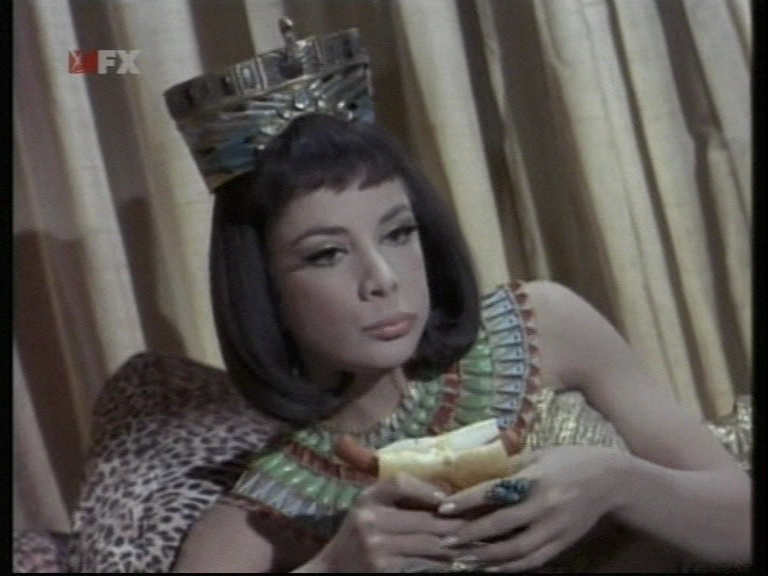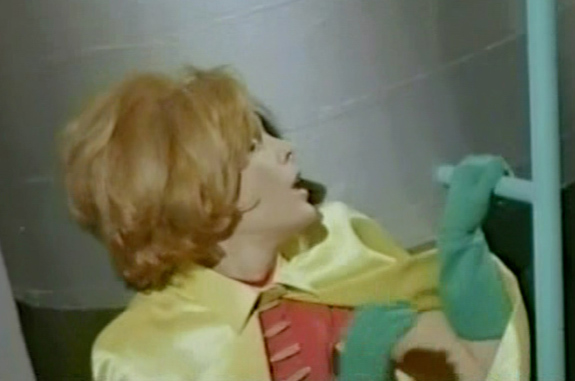“Handsome, clean-cut, and groovy” is how the nefarious villainness Nefertiti (Ziva Rodann) describes Batman when she sees him (significantly) on the television. This sparks the ire of the evil King Tut — but if he’d only watched previous bat-episodes, you’d think he’d be resigned. The henchwomen are always falling for Batman’s brand of paunchy, be-tighted goodness and/or grooviness; there’s just something about a cape that makes the bat-fans swoon.
Batman isn’t only an object of desire on the 60s television show; he’s actually the only object of desire. The show includes gratuitously scantily clad lovelies, especially in the first King Tut episode, with its gleeful harem tropes and Nefertiti herself chewing anachronistically but enthusiastically on a phallic hot dog.

But the lovelies are never identified within the dialogue as objects of erotic interest; Batman and Robin are impervious to their charms, and (in Nefertiti’s case) appear to forget about her altogether after she’s tragically driven insane by pebble torture and engages in a beguiling bat dance. The only clue that anyone notices she’s hot is the voice over of the second episode, which refers to her as a “dish”. This is the case with virtually all the other leading ladies as well; Julie Newmar as Catwoman wears a skin-tight, jaw-dropping outfit, but no one’s jaw drops; the Moth, one of Riddler’s associates, wears a skin-tight, eye-raising outfit, but no one’s eyes are raised. The only sex object which is acknowledged as a sex object is the Batman himself. In this show, it’s women, not men, who visibly lust.
Batman is often described as “camp.” Camp can mean various things, but it’s often connected to queerness, gay themes, or the closet. In this case, the show is certainly reversing, or inverting, the expected economy of desire. You could say that the female concupiscence directed at Batman is a humorous stand-in for the male gaze that viewers are encouraged to cast at Nefertiti and her sisters. But you could just as easily say that the male gaze is the concealed deception which hides the obvious truth — which is that the show presents Adam West, for both male and female viewers, as the central erotic point of interest, from Bat bulge to Orientalized sensuous Bat dance. Superheroes are sexy, Adam West tells you; groove on it, Bat fans, surreptitiously or otherwise.


